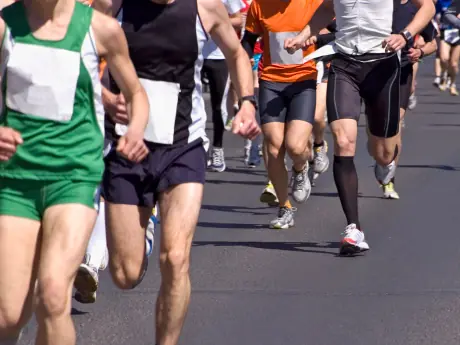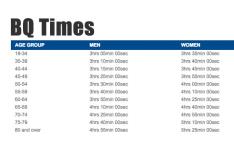
Have you ever started a marathon too fast, running the second half slower than the first? You're not alone. Nearly every runner has let pre-race adrenaline and fresh legs get in the way of perfect pacing.
Pacing is part art and part science. Recent research published in Medicine and Science in Sports and Exercise highlights that most marathoners aren't very good at pacing the 26.2-mile distance. The study analyzed 91,929 race performances in 14 U.S. marathons in 2011, comparing runners' times at the half-marathon point with their finishing times to get an idea of pacing execution. They found that men ran the second half of the marathon an average of 15.6 percent slower than the first and that women averaged 11.7 percent slower. While women fared better when it came to pacing, both results were far from ideal.
There's no doubt that keeping your pace under wraps at the start of a race to preserve energy for the latter stages is easier said than done. "If you've tapered properly, you're probably bouncing off the walls and feeling an over abundance of energy," says Matt Forsman, a USATF-certified coach based in San Francisco. "This, in combination with the incredible energy and adrenaline one typically encounters at a race, can lead to a start that is a bit too fast."
More: How to Taper to Boost Performance
Despite the difficulty involved in pacing, just about every marathon coach will tell you that you're better off keeping your pace relatively even. Consider the top times ever run in the marathon. Recently, Kenyan runner Dennis Kimetto ran a world-record time of 2:02:57 at the Berlin Marathon, crossing the half-way point in 1:01:45. Similarly, in 2003, Paula Radcliffe ran a world-record time of 2:15:25, splitting the race in 1:08:02. While you may not be a professional runner, every runner will benefit from even pacing, especially in longer distances such as the marathon.
"The best race performances are frequently associated with consistent pacing from start to finish, but some runners have the fallacious idea that you can bank time by running faster in the first half," says Forsman. "If you start your race faster than your target pace, the likely result is you will find yourself fading in the latter stages of the race."
While you may be able to gain a few minutes in the first half thanks to fresh legs and excitement, you can lose far more when you incur muscle damage, exhaust muscle glycogen stores, and hit the wall in the second half. Overextending early on in a marathon is one of the most common mistakes new marathoners make.
- 1
- of
- 3
About the Author

Get ACTIVE on the Go


Couch to 5K®
The best way to get new runners off the couch and across the finish line of their first 5K.
Available for iOS | Android







Discuss This Article